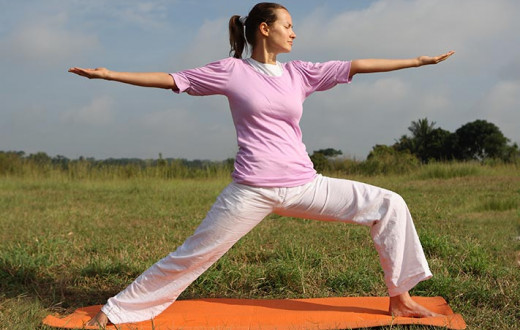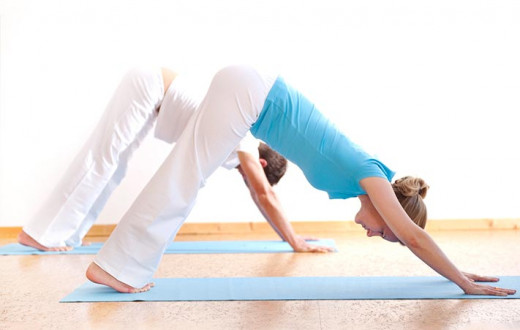
We are a society of shallow breathers. Some of us are barely breathing at all. Forget about using all three lobes of our lungs, chest breathing has become the norm. And that isn’t ideal when it comes to our health.
We are breathing just enough to stay alive, and not much more.
There is actually a lot more to breathing than just in and out, and over and over again.
Deep breathing has amazing health benefits for your whole life! Especially when you breathe deeply in specific ways.
If you are finding yourself thinking, “I just need to catch my breath!”, then this article is for you!
Let’s take a deep breath and dive into all the deep breathing benefits, including how and where to learn more.
Why does deep breathing matter?
We already know that breathing keeps us alive. But it also does many other important things, to a greater or lesser degree, depending on how efficiently and deeply we breathe.
For instance, when you inhale, air enters your lungs, and oxygen from that air moves into your blood. At the same time, carbon dioxide, a waste gas, moves from your blood to the lungs and is exhaled. This process, called gas exchange, is essential to life.
Shallow breathing leads to not having enough oxygen for your body and mind to function properly. And too much carbon dioxide leads to toxicity. This dynamic can result in a whole host of health issues.
What can you look forward to, if you are not breathing deeply enough? Confusion, low energy, strained heart rate, rapid shallow breathing, gasping, and even sweating.
Is anybody feeling anxious while reading this?
And what about all the health issues that come from feeling anxious and overtaxing your heart and brain with a lack of oxygen?
Deep breathing matters!
What happens to the body when you take a deep breath?
One of the most amazing things that happens when you take a deep breath is the stimulation of the vagus nerve. What’s the vagus nerve? It is the primary nerve that communicates with the brain and body.
The vagus nerve is responsible for sending the message to your system to either fight or take flight, or alternatively, to rest and digest. In other words, it activates either your sympathetic or parasympathetic nervous system, and can have significant effects on your well-being.
When ordinary stresses have you engaging in your fight or flight response, your physical and mental health suffer.
Just taking a deep breath in and slowly breathing out a few times is enough to begin to stimulate the vagus nerve positively, resulting in a calmer you.
Read on to learn the easiest way to stimulate your vagus nerve with breathing exercises for long-lasting results.
Fresh air and deep breathing
We instinctively take a deep breath in whenever we are exposed to fresh air. Why is that?
Fresh air is richer in subtle energy called prana than our cooped-up office cubicles or any indoor space for that matter. The air in and around forests and oceans is especially prana-rich. Maybe that’s why so many people love hiking in the woods or vacationing at coastal beaches.
What can prana do for you? Higher prana levels equate with an increase in awareness, clarity, centeredness, optimism, positivity, contentment, and a feeling of lightness.
When you can’t get away to take advantage of these prana-rich environments, you can practice deep breathing exercises, anytime, anywhere, and improve your prana levels.
Deep breathing exercises
Among all the different relaxation techniques out there, deep breathing exercises are considered by many to be the best. They provide easy and healthy ways to deal with stress and regain your calm quickly.
Here’s how to do a simple deep breathing exercise, and where to learn two more.
Diaphragmatic breathing
Since the lungs have no skeletal muscles of their own, the work of breathing is done by the diaphragm, plus the muscles between the ribs, the muscles in the neck, and the abdominal muscles.
Diaphragmatic breathing is also called belly breathing. Here are step-by-step instructions you can use to breathe your stress away.
- Sit or lie down straight on a comfortable, flat surface.
- Relax your body and take your attention inwards.
- Put your left hand on your upper chest and your right hand on your belly.
- Take a long, full, deep breath through your nose and fill your lungs up completely.
- As the lungs get fully filled, your abdomen and sides of the waist expand. Your chest remains relatively still. Your hand on your belly gently rises.
- Exhale slowly through pursed lips (as if your lips are holding an invisible straw in your mouth). Notice the abdomen is lowering and gently getting pulled towards your spine. The hand that is resting on your belly will gently come back to its original position.
- Repeat these steps 10-15 times for the best results.
Bellows breath
Nicknamed Yogic Cappuccino, bellows breath, uses a vigorous inhalation and a forceful exhalation to increase prana. It expels toxins, while also stimulating the vagus nerve. You can learn this breathing technique by attending a FREE breath and meditation session mentioned below.
Three-stage breathing
This breathing exercise focuses on the lungs' lower, middle, and upper lobes (usually limited to athletes). Three-stage breathing expands lung capacity, increases prana, and directs that prana to specific areas of the body. You can learn this technique in a SKY Breath Meditation course.
Deep breathing benefits
Benefits of deep breathing for the mind
- Helps reduce anxiety
- Helps manage depression
- Improves focus
- Increases mental energy
- Reduces addictive behaviors
- Helps reduce PTSD symptoms
Benefits of deep breathing for the body
- Healthier blood pressure
- Useful with tension headaches
- Enhances sleep
- Increases immunity
- Improves circulation
- Increases physical energy
- Expands lung capacity
Breathing trivia
- We breathe 12-16 times per minute—that's about 20,000 breaths per day!
- The average person breathes in the equivalent of 1.625 gallons of air every minute. That is about 2340 gallons per day. But most of us use only two-thirds of our optimal lung capacity. Learning to breathe deeply can help us to use our full lung capacity.
- 70% of toxins are eliminated through your lungs simply by breathing.
- Your emotions change the way you breathe. Research has shown that your breathing patterns can influence the emotions you experience. Learning to breathe in specific ways can help you manage your emotions and your mind.
- Breathing is the only autonomous system of the body that we can also control. This means that the body governs it, but we can change how we breathe through conscious breathing exercises.
Learn a daily deep breathing practice
SKY Breath Meditation (Sudarshan Kriya) is a gentle yet powerful deep breathing practice that is easy to learn and provides all of the mind and body benefits listed above, and more.
SKY increases your prana and stimulates your vagus nerve effortlessly.
If you really want to get the most out of deep breathing, check out this FREE breath and meditation session with a live instructor (no pre-recorded webinar). You’ll learn one of the deep breathing techniques mentioned above, bellows breath, and experience a relaxing guided meditation. You will also have an opportunity to ask questions about SKY.





















